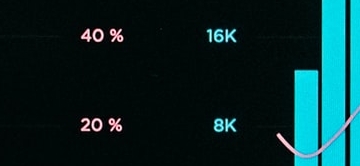Governments have been urged to be more transparent about the progress of the pandemic, and their plans for dealing with it. But sometimes the less information the public has in advance, the better.
As the cases of Italy and Spain sadly demonstrate, being transparent about a likely future quarantine is a really bad idea. Leaks about impending quarantine measures caused mass flight from cities. And advance warnings of lockdown restrictions in the UK and elsewhere have led to panic buying in supermarkets. When the public anticipates quarantine, too much transparency can provoke the very actions the policy is designed to prevent.
To see which dimensions of public policy need less transparency and which need more, we need to distinguish two features of pandemics. The first is that individuals often fail to consider the impact their decisions can have on the wellbeing of others, to an extent that varies a great deal across risk groups. Right now, it’s hard to persuade the young to take social distancing seriously because their risk is much lower than for the elderly.
But it’s the young who are the greatest risk to everyone else because they are much more likely to mix with others when carrying the virus without showing symptoms. Restricting the movements of the young and healthy is much more important for fighting the pandemic than trying to confine the elderly, who are more likely to stay home of their own accord.
The second important feature of pandemics is that many people know much more about their risk of being infected than the authorities do. They know where they have been and whom they have seen. And they don’t necessarily want this information to become more widely known. They might want to be discreet about visits to friends, or to others such as sex workers. They might be doing things the government or their employer would disapprove of. Or they might simply be feeling guilty about casual contacts with friends or neighbours.
It doesn’t matter what the motive is – if people can’t trust the medical professionals with this information, it won’t be provided. But the information could be a goldmine for public health. Suppose 90% of infections came from only 10% of the spreaders. If we could tell what made the difference between these “super spreaders” and the rest, we could target public health interventions much more effectively. We could lower the overall infection rate with much less disruption to society.
In this dimension, we need more transparency rather than less. Potential super spreaders need to be reassured that they will not be penalized for sharing information with professionals. And the public in general needs to be reassured that while the anonymity of individuals is guaranteed, the basic facts of the pandemic are being communicated fast and without political spin.
Trust in the capacity of the state matters too. Disparities between places in the quality and availability of healthcare encourage people to evade restrictions on movement so as to avoid low-quality or overcrowded hospitals. For normal illnesses, such behaviour would help to distribute demand more efficiently around the available sources of treatment. But it becomes deadly when those moving around are most likely to infect others. More transparency about the rules determining eligibility for treatment will help to avoid movement intended to game the system.
The emerging experience of different countries suggests several lessons. The tendency to spread the disease appears to vary a lot between different places and social groups. For instance, the rate of spread of the virus seems to have been much higher in Hubei Province (where the epidemic began) than elsewhere in China. We don’t know whether that’s just because the rest of China locked down earlier, or if other differences in behaviour were also responsible. This makes it vital to understand what is causing these differences, by encouraging individuals to tell professionals as much as they can.
Taiwan and South Korea began detailed tracing of contacts of all individuals presenting symptoms very early in the pandemic. This contrasts with Italy, which adopted such measures late and has now been forced to resort to much heavier-handed policies that hardly distinguish between different risk groups.
In China, the authorities have used their draconian powers not just to ensure public conformity with tough measures of confinement but also to crack down on public dissent. The stifling of any information that might contradict the official story has had consequences for the early management of the outbreak, and also, perhaps, for the willingness of the population to continue to accept confinement. China’s expulsion of foreign journalists suggests this simple message is not getting through.
Trust is what matters: whether it’s to induce individuals to cooperate with the authorities in helping them to trace contacts, or to persuade the public to stick with long-term coercive measures for the common good. To build trust, we need transparency about the procedures for collecting information about individuals and their networks, and democratic oversight of the authorities’ use of this information. Beyond that, transparency may do more harm than good.
TSE Mag #20: Spring 2020
Photo by Marco Oriolesi on Unsplash




